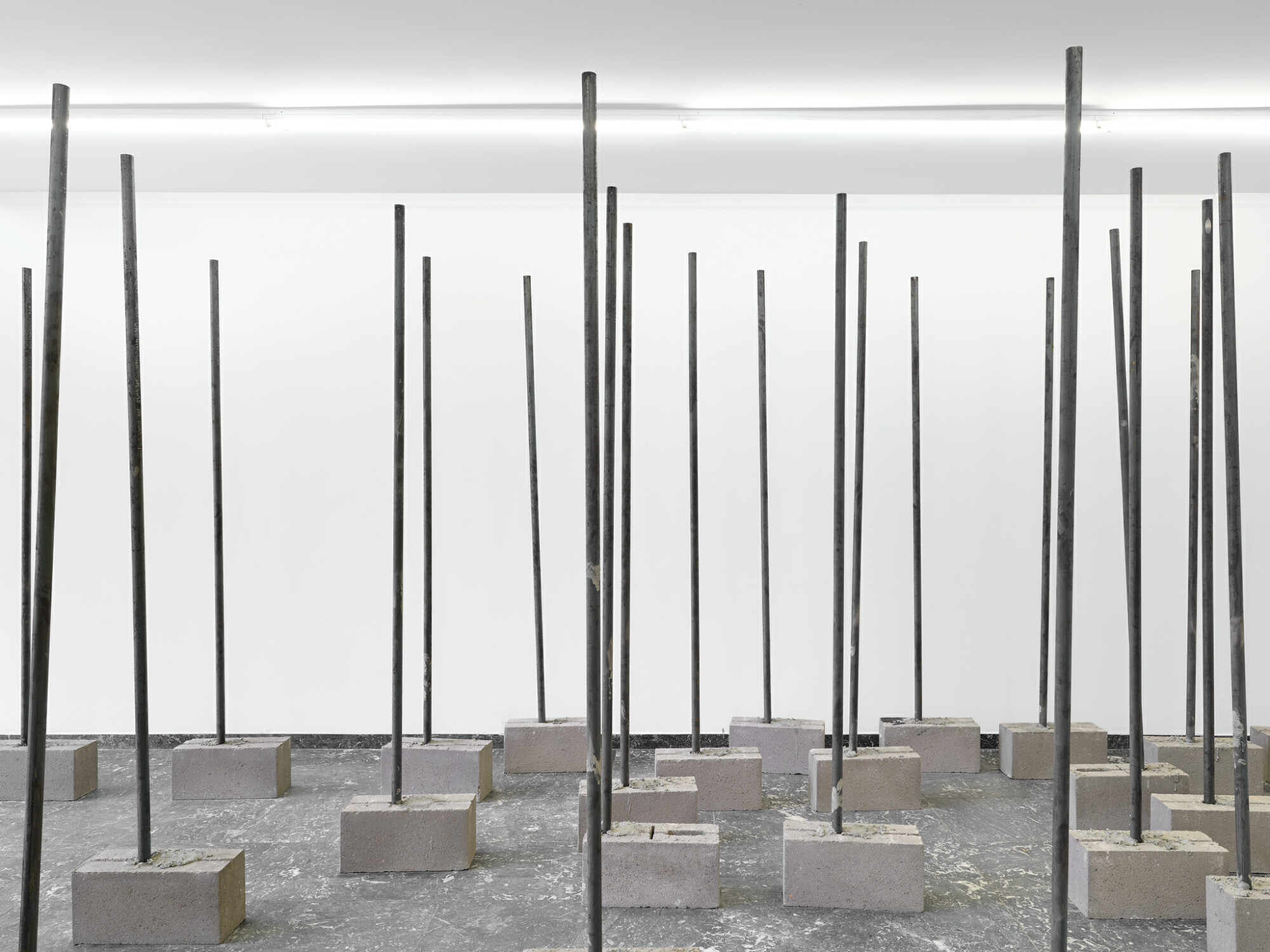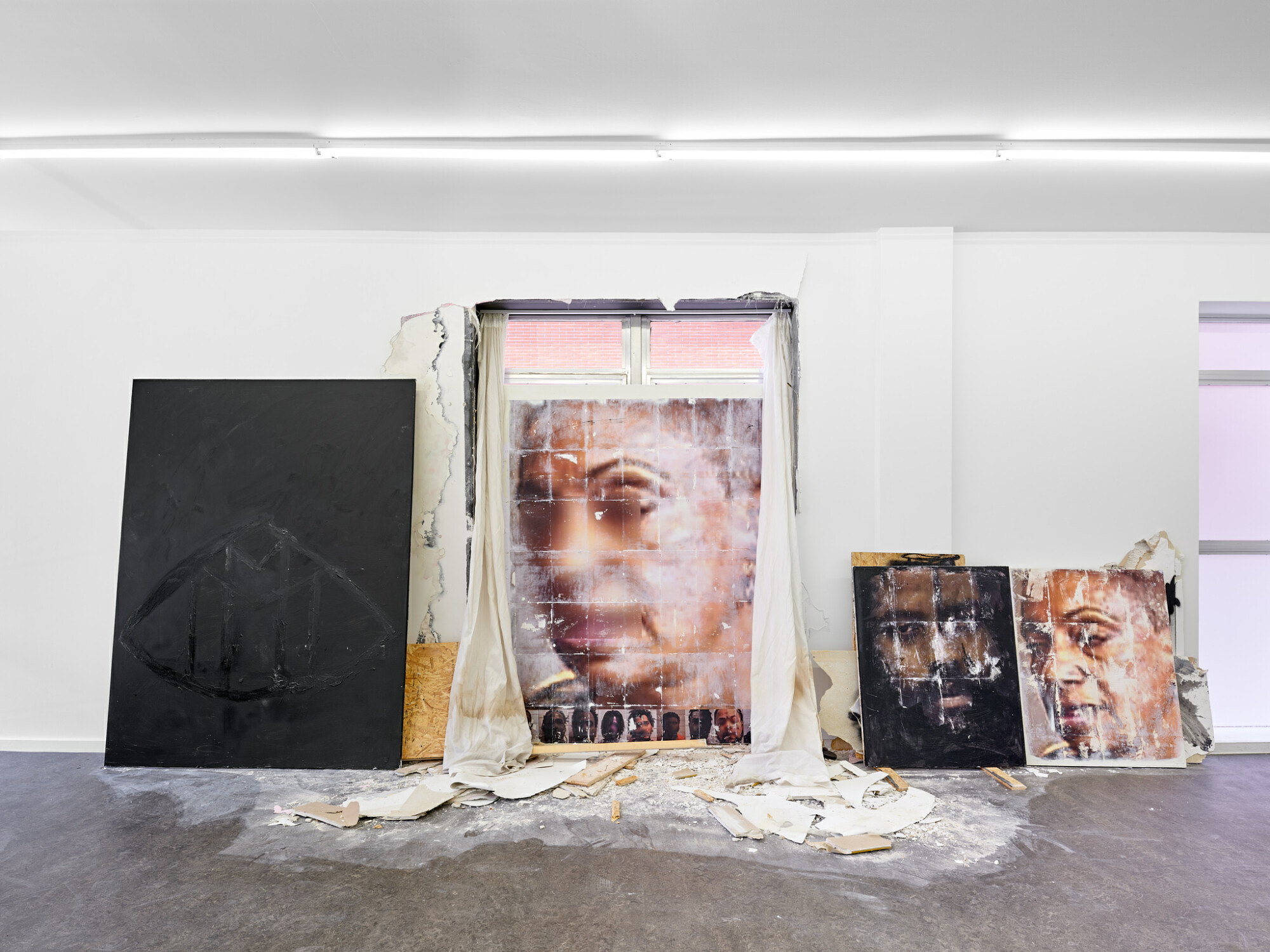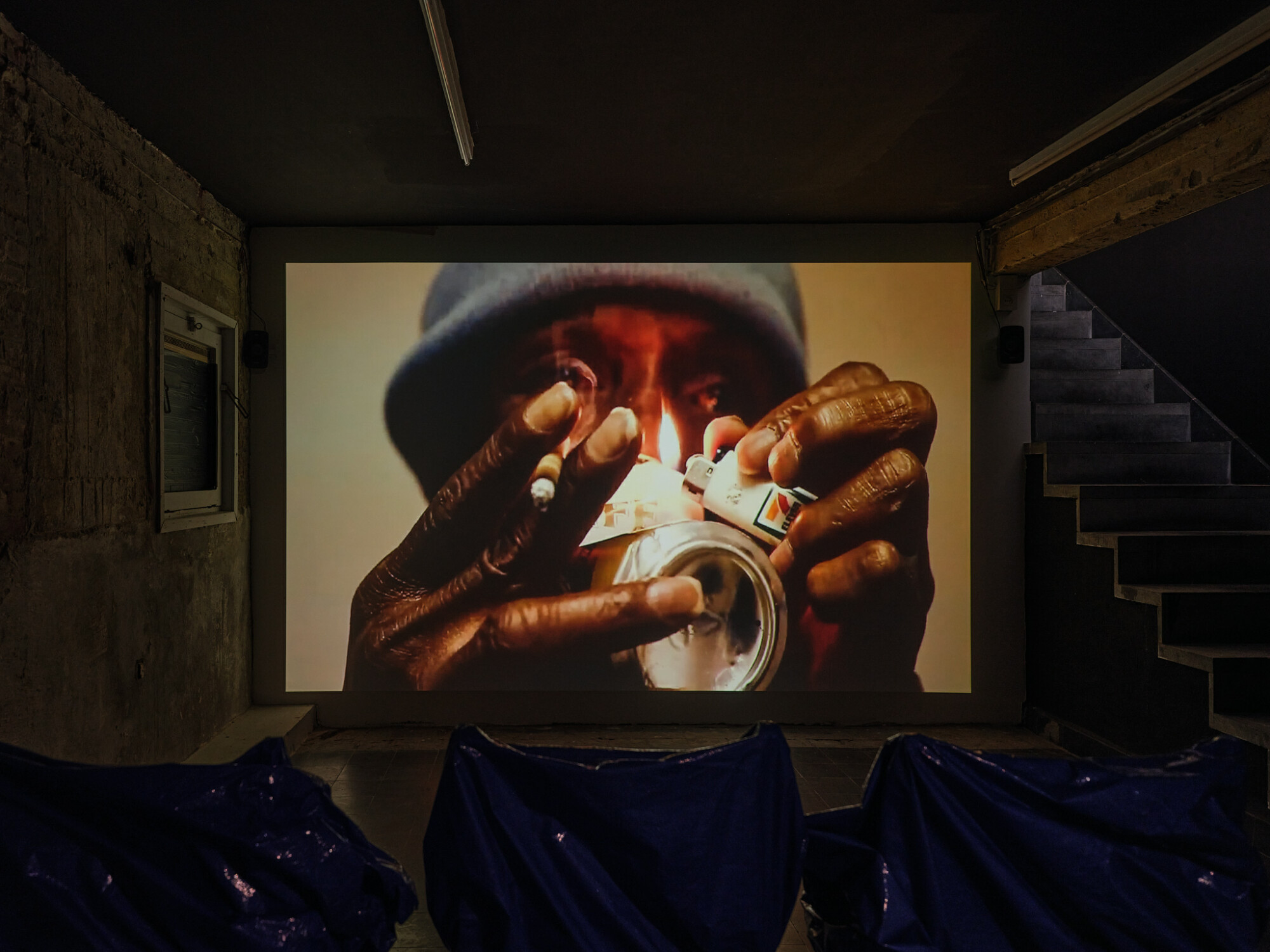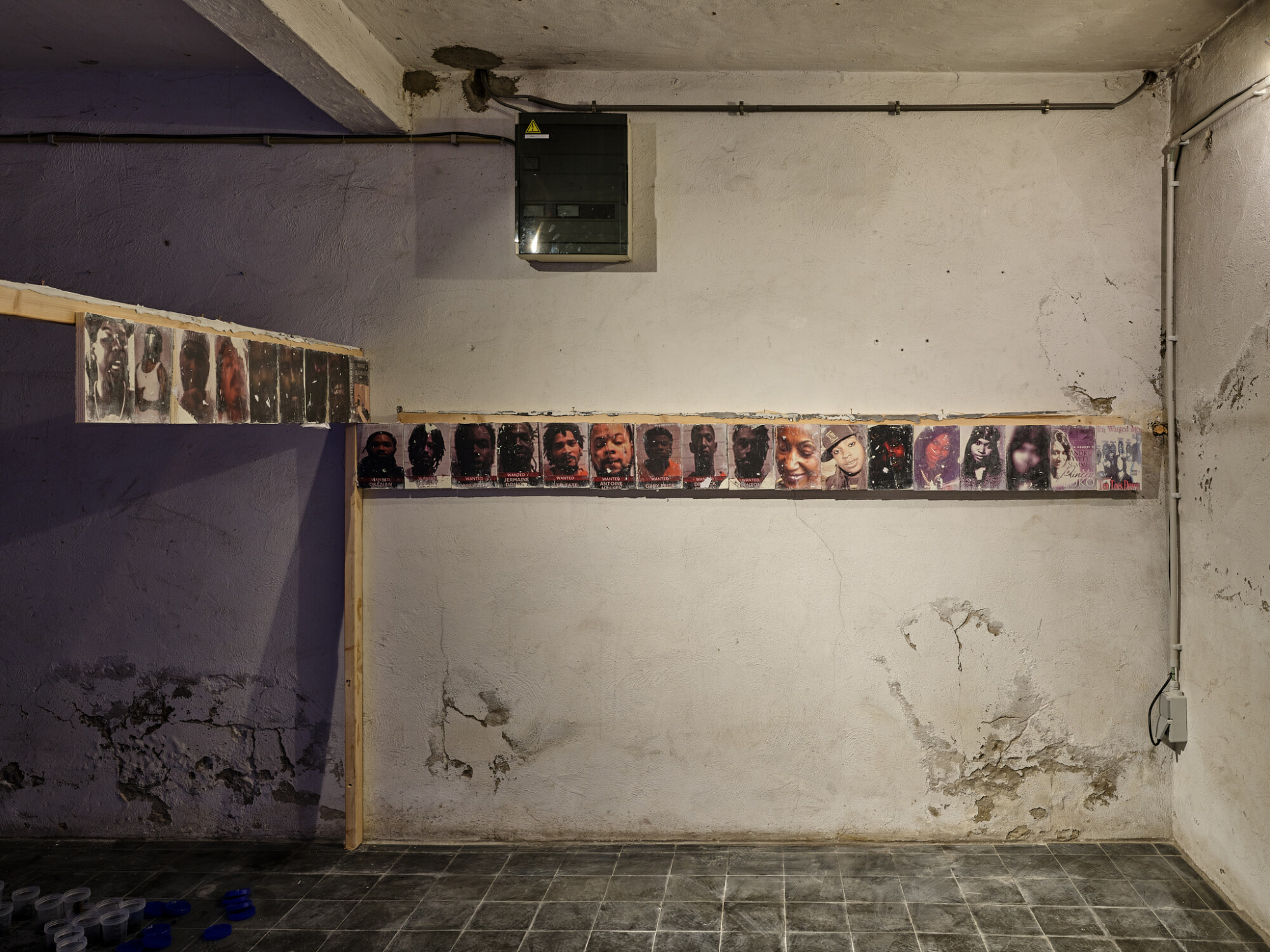TICK TACK’s space spans five rooms over three floors, descending from a mezzanine level of which any contemporary gallery would be jealous, down through the ground floor exhibition space and into a (mostly) unfinished basement comprising three small rooms. The first of these rooms, entered via stairs from the ground floor, is the most finished, with a white wall installed for the purpose of projecting Allen-Golder Carpenter’s film from which the exhibition takes its name, Sojourn.
Sojourn feels like a Kojima game, because of the style of graphic rendering, the moody tone of the piece, the structure and delivery of the dialogue. The protagonist, a 3D rendering of Carpenter, makes their way through a deserted landscape, learning their own name through a series of memories beamed into their head and played on screen to the viewer. Sojourn, carpenter’s Avatar, speaks with a disembodied voice (played by Blackhaine) who questions their right and ability to use, and attempt to shoulder, the experience of others – echoing an anxiety around found imagery and appropriated experience in the rest of the exhibition.

I would consider myself deeply familiar with Carpenter’s work, having closely observed their practice as it developed from an embryo into a machine on the verge of terminal velocity. Without looking it up, I estimate Sojourn to be the artist’s seventh exhibition of the summer, a significant amount of which were produced on site – a feat few could hope to achieve or would even desire to attempt.
This momentum creates the necessity for brevity, works must be conceived and produced in unison. Projects like the film around which Sojourn is built can develop over periods of months or even years but other works, like the sculptures and paintings in the exhibition, must be produced in the gallery. They are surrounded by the debris of their making, the tiled floor dusty and flecked with concrete and the walls of the mezzanine splattered with pigment. Sojourn, as much as its conceptual underpinning addresses memory, systemic violence, and cultural erasure – especially as experienced by Black communities in the United States – the exhibition is littered with the residue of making.

Making, to physically produce something with one’s hands, is to claim a right over that material and environment in which it is shown. Artistic output is, at times, no more than a record making, a record of that claim to material or to space. Carpenter truly does claim the space, making use of every inch of the gallery, hiding miniature works in corners, removing an internal section of wall and leaning two paintings into it – one facing out into the street, only viewable from outside of the gallery.
The image-based works (paintings?) are stacked along the gallery wall, piled on top of one another. The artist’s favourites face the front but the others can be viewed by moving those front-facing pieces, encouraging viewers to interact with the work on a haptic level not often extended to anyone outside of the studio. The chaotic aesthetic of the pieces of course means that an errant oily fingerprint is unlikely to be noticed, there is little to no risk to the efficacy of the works in their being touched, if anything, the wear and tear would add to their charm.

Stacking rejects the traditional notion of an artwork as a fragile thing, to be handled from each side by white gloved professionals and securely packed into a crate. Of course, it asks the viewer to decide on value by themselves, but also asserts the artist as a maker. It almost seems to want to show the labour of making, to show that work was carried out and that this work took time and effort. It pushes the claim further, the space is not just owned, it is used.
The work found in the deepest corner of the exhibition is titled Free Jah Morant and is one of the pieces I referred to earlier, existing in the mind over a period of years before finally making its way into the gallery space. A rotating bedazzled urine test cup acts as a lens through which a series of music videos are projected distorting the form of the image as the rhinestones are pulled in and out of frame by the motor. At the other end of the room, on the floor beneath the projection, sits a dark test-cup of the artist’s own urine, an allusion to providing clean urine for a relative on parole.

In this simple gesture, the connection of a story, emotion and object, exists the beating heart of Carpenter’s practice. Rhinestones as a material are not interrogated, we don’t need clarity on the position of the disco-ball effect in relation to the urine because the mind is an errant structure. Experience is not linear and narrative in reality is rarely carefully constructed, real stories are full of holes and pacing issues.
Carpenter pushes frantically through the mire of the mind, experience bore down on by personal and collective memory, media and ideology. What emerges is an object, something imbued with reverence beyond itself. Whether made or found, these objects attest to a desire to free oneself from the burden of memory but maintain an awareness of the futility of forgetting. They forge a paraphysical connection between object and experience, shared with the audience by the artist.
—
Allen‑Golder Carpenter (b. 1999, Washington, D.C.) is a gender-nonconforming interdisciplinary artist, designer, poet, author, and activist. Drawing from rap culture, found objects, writing, film, and performance, Carpenter’s work interrogates memory, systemic violence, and cultural erasure—especially as experienced by Black communities in the United States.
Allan Gardner is a Scottish artist and writer based in London.




